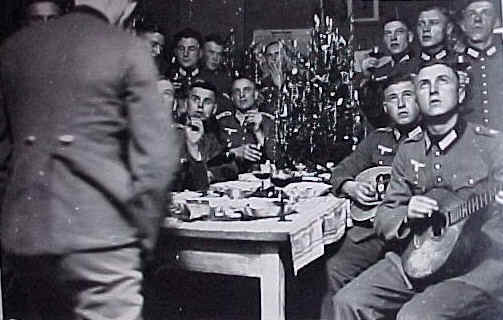|
|||
Cuffs: French cuffs Rear Vent: Reverse tail skirt vent with two belt ramp style buttons to top. Buttons: Pebbled aluminum. Piping: Tunic front. Interior: Fully lined in rayon, with suit-lining in sleeves. Lining has a vertical slash pocket to left breast and two vertical slash pockets at tail skirt vent. Lining also has a horizontal slash to reverse of left hip pocket for dagger/sword hanger.
|
|||
|
|||
|
|||
|







